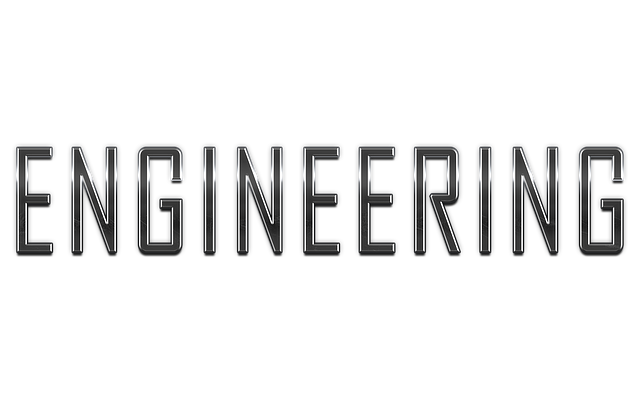navigating the complexities of vehicle ownership, it’s imperative to grasp the nuances between salvage and rebuilt titles. Vehicle title transfers involving these designations come with unique stipulations that impact both sellers and buyers. This article delves into the specifics of transferring a rebuilt title, emphasizing the necessary steps, documentation, and inspection requirements to ensure a seamless transaction. Whether you’re looking to sell your car with a rebuilt title or purchase one, understanding the process is key. We’ll guide you through the intricacies of completing rebuilt title transfer paperwork and the critical inspections that verify a vehicle’s roadworthiness after salvage. Key considerations for transferring a title from salvage to rebuilt will also be highlighted, ensuring legal compliance and peace of mind for every transaction.
Navigating Rebuilt Title Transfers: Essential Steps and Documentation for Sellers

When preparing to sell a vehicle that has been rebuilt and holds a rebuilt title, it’s imperative to have all the necessary documentation in order. The process begins with gathering all the paperwork associated with the rebuilt title transfer. This includes the original rebuilt title certificate issued by the Department of Motor Vehicles (DMV), evidence of the salvage title history of the vehicle, and detailed records of the repairs completed. These records should be comprehensive and may include photographs, receipts, and a complete list of parts used during the reconstruction process. Sellers must also provide proof that the vehicle has passed all required inspections to ensure it is safe for road use. These inspection requirements vary by state but typically involve emissions tests and safety checks.
Once the repairs are verified and the vehicle passes the necessary inspections, the seller can proceed with transferring the rebuilt title. The seller should complete the appropriate transfer forms provided by the state’s DMV, which may include a bill of sale or transfer of ownership form. It’s essential to accurately fill out these forms, ensuring that all information such as vehicle identification number (VIN), odometer reading, and transaction details are precise to avoid any legal complications for the buyer. Additionally, the seller must notify their insurance company of the title change to update the vehicle coverage accordingly. By following these steps and ensuring all rebuilt title transfer paperwork is in order, sellers can facilitate a smooth transition and provide peace of mind to potential buyers that the car has been properly restored and is legally roadworthy.
Understanding the Rebuilt Title Transfer Process: A Guide for Buyers

When purchasing a vehicle with a rebuilt title, it’s imperative to understand the transfer process to ensure compliance with state regulations. The rebuilt title transfer process begins with gathering all necessary paperwork. This includes the completed application for a certificate of title, proof of ownership such as the previous salvage title, a bill of sale, and detailed documentation of the repairs made to the vehicle. These records must be meticulously maintained as they serve as evidence that the vehicle has been restored to safe operating standards. Buyers should also prepare for the rebuilt title inspection requirements, which vary by state but generally involve a thorough examination by a certified inspector to verify that all repairs have been performed according to manufacturer specifications and local laws.
Once the vehicle passes the required inspection, the buyer can submit the completed application, repair documentation, vehicle identification number (VIN) verification, odometer disclosure statement, and any other state-specific forms to the Department of Motor Vehicles (DMV). The exact paperwork for rebuilt title transfer can be obtained from the DMV or their official website. It’s important to note that each state may have its own set of rules and procedures, so it’s crucial to consult the local DMV for specific requirements. After submission, the DMV will issue a new title reflecting the rebuilt status. Sellers looking to transfer a car with a rebuilt title should ensure they provide all the necessary documentation and assist the buyer through the process to facilitate a smooth transition of ownership. Understanding these steps is key for both parties to navigate the legal framework of salvage-to-rebuilt title transfers effectively.
The Necessary Inspection Requirements for Vehicles with Rebuilt Titles

When transferring a rebuilt title, it’s imperative to adhere to state-specific requirements, as they can vary. Generally, the vehicle must undergo a detailed inspection to confirm that it has been repaired according to manufacturer specifications and is safe for road use. This inspection typically includes a review of the vehicle’s structure, mechanical systems, and electrical components. The process begins with submitting comprehensive documentation of all repairs made, which should include part numbers, repair estimates, and receipts. This paperwork often involves filling out rebuilt title transfer forms provided by the Department of Motor Vehicles (DMV). Upon successful inspection, the vehicle will be assigned a rebuilt title, indicating its history and current roadworthiness. For sellers, understanding these requirements is essential when preparing to sell a car with a rebuilt title. Prospective buyers should seek out the original salvage title along with the documentation of repairs and the completed inspection to ensure the vehicle’s integrity. The title transfer for salvage-to-rebuilt cars involves presenting this paperwork to the DMV, alongside proof of ownership, such as a bill of sale, and fulfilling any additional state-specific criteria for the rebuilt title transfer process. Ensuring all these steps are completed correctly is key to successfully transferring a rebuilt title and providing peace of mind to both buyer and seller.
How to Complete Rebuilt Title Transfer Paperwork Correctly

When transferring a rebuilt title, it’s imperative to adhere strictly to the paperwork requirements set forth by your state’s Department of Motor Vehicles (DMV). The process begins with gathering all necessary documentation. This includes completing the appropriate forms for a rebuilt title transfer, such as an Application for Title and Registration or a similar form specific to your state. Additionally, you must provide evidence of the vehicle’s previous salvage status being resolved. This typically involves submitting the original salvage title along with a police report or insurance documentation that detailled the circumstances of the damage and the subsequent repair process.
Upon gathering these documents, the next step is to undergo a rebuilt title inspection. The vehicle must pass a rigorous assessment to ensure it meets safety and operational standards. This inspection verifies that all repairs have been performed according to manufacturer specifications and that the car is safe for road use. Once this inspection is completed and passed, you can submit the documentation along with the inspection report to your local DMV office or online if available. Ensure that all forms are filled out correctly and all information is accurate and complete. Any discrepancies or omissions can cause significant delays in the transfer process. After submission, the DMV will review your application and, upon approval, issue a rebuilt title. It’s advisable to consult your state’s DMV guidelines for precise requirements, as they may vary from one jurisdiction to another. For sellers, understanding the process is equally important when selling a car with a rebuilt title. Potential buyers will need to follow these steps to transfer the title into their name, ensuring a smooth transaction for both parties involved.
Key Considerations for Transferring a Salvage-to-Rebuilt Car Title

When initiating a salvage-to-rebuilt car title transfer, it’s imperative to adhere to state-specific regulations and complete all necessary paperwork. The process begins with gathering comprehensive documentation of the repairs made to the vehicle. This typically includes detailed records of parts used, labor costs, and information about the repair process itself. Buyers must ensure that the vehicle underwent a proper rebuilt title inspection to meet state standards for roadworthiness before proceeding with the transfer. The inspection verifies that the car is safe to operate and that all repairs have been executed to the satisfaction of the authorities.
Sellers, on their part, should be prepared to provide potential buyers with proof of the vehicle’s rebuilt status, including a certificate of title branded with a salvage indication that has been replaced with a rebuilt designation after the necessary inspections. The transfer paperwork for a rebuilt title often involves submitting an application for a rebuilt title to the Department of Motor Vehicles (DMV), along with the aforementioned documentation and payment of any applicable fees. It’s essential to familiarize oneself with the specific forms required by the state, such as the Application for Title and Registration (FORM MR-1) in California, or equivalent paperwork in other states. Compliance with these requirements is not just a legal necessity but also a safeguard for both parties involved in the transfer, ensuring that the vehicle’s history is accurately represented and that it conforms to all safety standards before hitting the road again.
When completing a vehicle title transfer involving either a salvage or rebuilt title, it’s imperative to follow the correct procedures and understand the nuances between these two designations. A salvage title signifies a vehicle that has been deemed a total loss, while a rebuilt title indicates a vehicle that has undergone extensive repairs and met stringent inspection standards to be roadworthy again. Prospective buyers and current owners must navigate the rebuilt title transfer process with care, ensuring all documentation is in order and inspections are completed as required by law. This article has outlined the critical steps for sellers looking to transfer a rebuilt title, guided potential buyers through the intricacies of the rebuilt title transfer process, clarified the inspection requirements for vehicles with rebuilt titles, and provided detailed instructions on completing rebuilt title transfer paperwork correctly. By adhering to these guidelines, vehicle owners can ensure a smooth transition when moving a salvage-to-rebuilt car title, safeguarding both their legal standing and the safety of the road.



